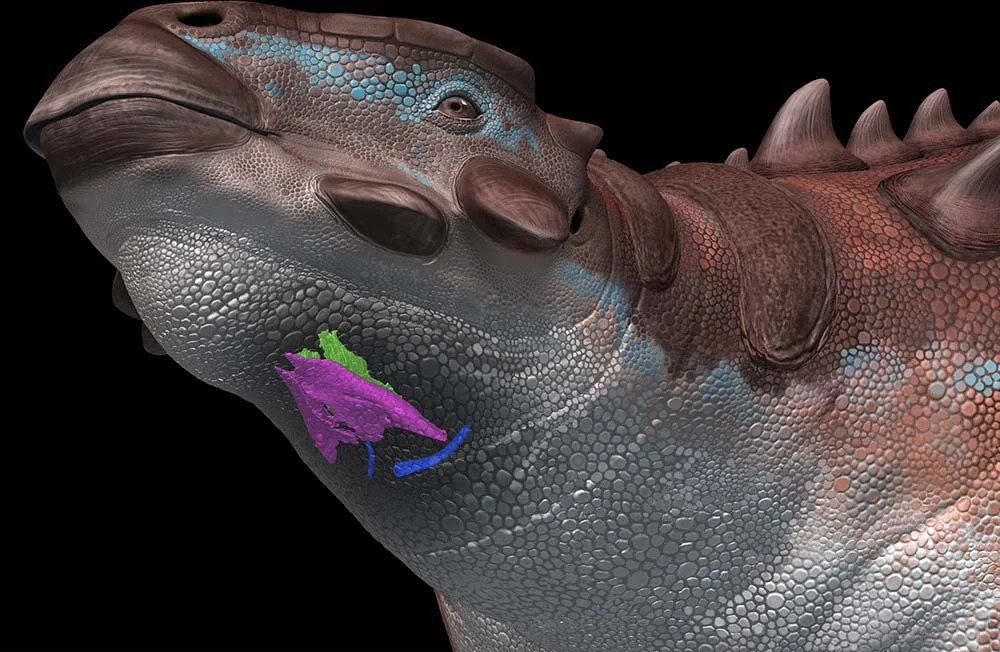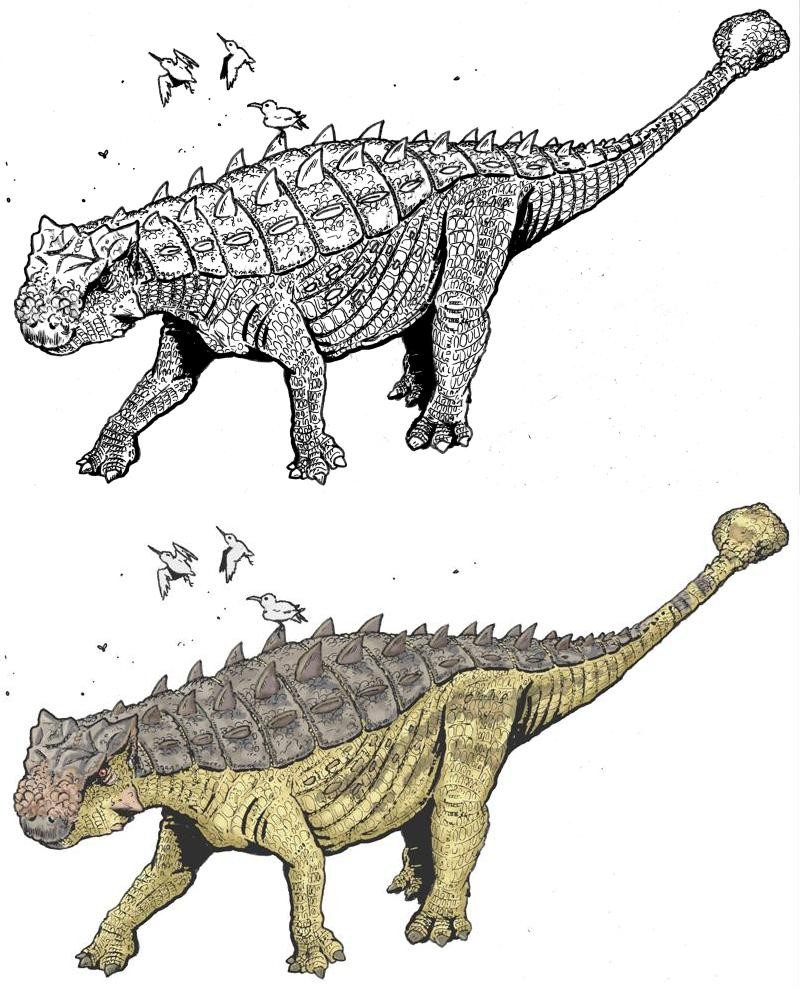'Extremely rare' fossilized dinosaur voice box suggests they sounded birdlike
By Ben Turner published 1 day ago
A fossilized ankylosaur voice box reveals that these beasts may have sported a far more sophisticated vocal range than scientists originally thought.

An artist's illustration of the ankylosaur, Pinacosaurus grangeri. The voice box is shown in color below its jaw. (Image credit: Tatsuya Shinmura))
The "extremely rare" discovery of an 80 million-year-old fossilized voice box that belonged to an armored dinosaur reveals that the ancient beast may have sounded more birdlike than experts previously thought, new research suggests.
Pinacosaurus grangeri — a squat, armor-plated and club-tailed ankylosaur unearthed in Mongolia in 2005 — was discovered with the first fossilized voice box (larynx) found in a non-avian dinosaur.
Now, a new analysis, published Feb. 15 in the journal Communications Biology(opens in new tab), suggests that the creature's vocalizations may have been far more subtle and melodious than its previously assumed crocodilian grunts, hisses, rumbles and roars.
"Our study finds the larynx of Pinacosaurus is kinetic and large, similar to birds that make a variety of sounds," study first author Junki Yoshida(opens in new tab), a paleontologist at the Fukushima Museum in Japan, told Live Science. Dinosaurs are archosaurs, a group whose living members include crocodilians and birds. These animals use sound for a variety of purposes, including courtship, parental behavior, defense against predators and territorial calls. "So, these are the candidates for its acoustic behavior," Yoshida said.
More:
https://www.livescience.com/extremely-rare-fossilized-dinosaur-voice-box-suggests-they-sounded-birdlike


Pinacosaurus grangeri


